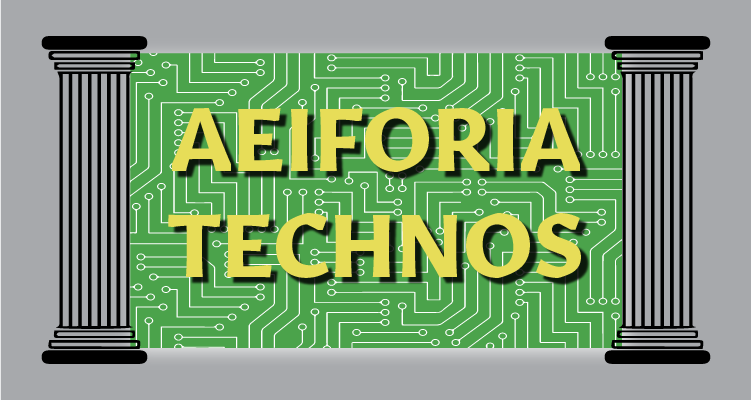USITT and the Greening of a Conference
 Recently the registration for the upcoming United States Institute for Theater Technology (USITT) Conference opened with a great renewed focus on providing a sustainable conference. When attendees arrive in March (14th-17th) to the show floor in Fort Lauderdale, Fla., there are several key strategies that they may notice and many more behind the scenes initiatives that Ron Procopio, USITT expo director, is leading to provide a low carbon impact and green experience for conference goers and exhibitors alike.
Recently the registration for the upcoming United States Institute for Theater Technology (USITT) Conference opened with a great renewed focus on providing a sustainable conference. When attendees arrive in March (14th-17th) to the show floor in Fort Lauderdale, Fla., there are several key strategies that they may notice and many more behind the scenes initiatives that Ron Procopio, USITT expo director, is leading to provide a low carbon impact and green experience for conference goers and exhibitors alike.
I have written on this subject before, but it is worth covering again as we head into a new year of technology focused conferences (LDI, BICSI, USITT, InfoComm, NAMM, etc.). Conferences and trade show events are incredibly harsh on the environment, generating millions of tons of waste and burning lots of fossil fuels in transportation and power usage. Typically, this can average 4 pounds of waste and 400 pounds of CO2 emissions per day for every attendee.
Often it starts with choosing the venue as not all venues are equipped to meet the challenges of sustainability requirements or rely solely on the organization hosting the convention to manage the efforts. So for this upcoming conference, Ron is working with the show services vendor Shepard Exposition Services to achieve the goals of a sustainable conference. Knowing that the sow floor often can generate lots of waste that ends up in dumpsters at the end of the day, from packing material, to signage at the booths, food and beverage service items, bottled water and even the carpet all impact the process.
First and foremost, USITT is ensuring a robust recycling plan above and beyond the standard blue recycle bins in the hall ways and lobbies of the convention center run by the center itself. The waste generated by the show left on the show floor, plastic, pallets, carboard, etc., will be moved to a specific recycling dumpster and sorted by a designated team. Additionally, graphic panels will be used for repacking items to be shipped back to storage after the conference. These will even be direct printed to minimize labor and waste in their creation.
Carpeting in the show floor will be made from 100 percent recycled material and reused as many as six times in the aisle ways and up to eight times after that in the booths themselves of the next several shows. Then it will be returned to the manufacturers to be chipped up and turned back into new carpet.
To minimize paper waste from printing multiple signs, new digital signage will be rolled out to be able to update content on the fly at each of the session rooms. Not only will this be ecologically beneficial, but it can also improve attendee satisfaction through providing the most current information from room changes to session cancellation. Touch screen monitors will also be used in the popular poster sessions on the show floor to minimize printing and square footage of the overall exhibit allowing more interactivity and participants.
Trucking costs huge in a conference from gas consumption and emissions to double shipping items. Shepard is working with the convention center to allow direct drop ship to the conference to avoid the excess. We have seen this being executed in Broadway show transportation though Clark Transportation, who is an avid and active member of USITT and major leader is the sustainability efforts in the performing arts along with being a founding member of the Green Broadway Alliance.
Even transportation of patrons is going to be improved through the use of shuttle buses and other mass transit options to minimize single commuter attendees.
Additionally, several functions of the conference, from registration and office space, to entrance structures and publication bins will be combined to reduce overall square footage allowing for shared power and other resources. This is possible by leveraging more digital forms of communication rather than printed materials and extending the use of the show app as the main form of communication and feedback.
Other opportunities that conferences can pursue include the use of recycled products that can still be recycled after their use and providing a convenient way to do so by the attendees. Additionally, conference goes love a good party and food. Working with the food service providers to right size the menu for the number of attendees and providing locally sourced food helps to minimize waste. Food waste is a major contributor to an increased carbon footprint in conferences in addition to an overabundance of non-recyclable or reusable plates, cups and silverware. Serving water in pitchers rather than bottles is another great way to decrease waste. Develop a plan to donate the leftover food that day to local shelters.
Additionally, a conference host should encourage attendees to be green as well. Strategies include partnering with hotels that have sustainability policies as the official hotels of the event. Give discounts to attendees that can show they car pooled or took mass transit during their stay or offer some other perk such as next year’s conference at a dramatically reduced rate. Competitions for this work well too for who can be the most sustainable attendee.
Encourage vendors to reduce their power demands by using LED based booth lighting. Also encourage them to provide all their literature electronically to attendees rather than printed brochures. Use touch screen technology and digital displays to showcase product features as a group rather than individually. For instance, display several self-powered loudspeakers that are connected to an interactive display that power up the specific speaker when that is chosen on the touch panel rather than having all of them powered up all day long. Provide incentive to vendors to reduce their power demands including, like with attendees, possibly a free exhibit spot in next year’s conference for who can be the greenest.
A great way to encourage this is to show real-time results in high visibility places including the registration booth, main entrance to the show floor, or even the app to keep the idea front and center. Have a solid messaging plan and engage the groups within your organization who have already picked up the torch around sustainability. Provide and encourage sessions around sustainability. The tech industry is full of ideas and products. USITT happens to have several who are involved in this and should be engaged to promote it. AVIXA and BICSI do as well. As an organization, the benefits are immense including the opportunity to reduce the overall cost of the conference and improving the social and environmental benefits. Savings could even be passed on to attendees in the form of lower conference fees which could boost attendance and even attract new members to your organization. So kudos to USITT! I for one am excited to see the show.




